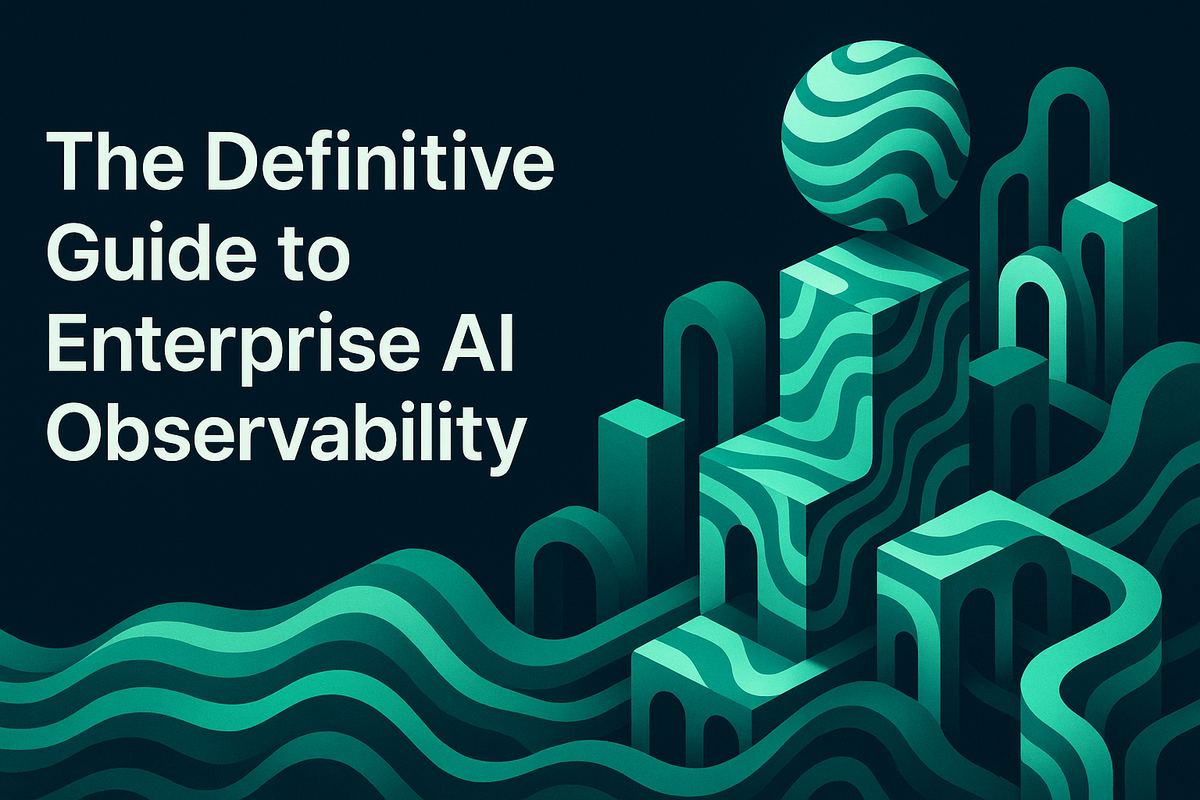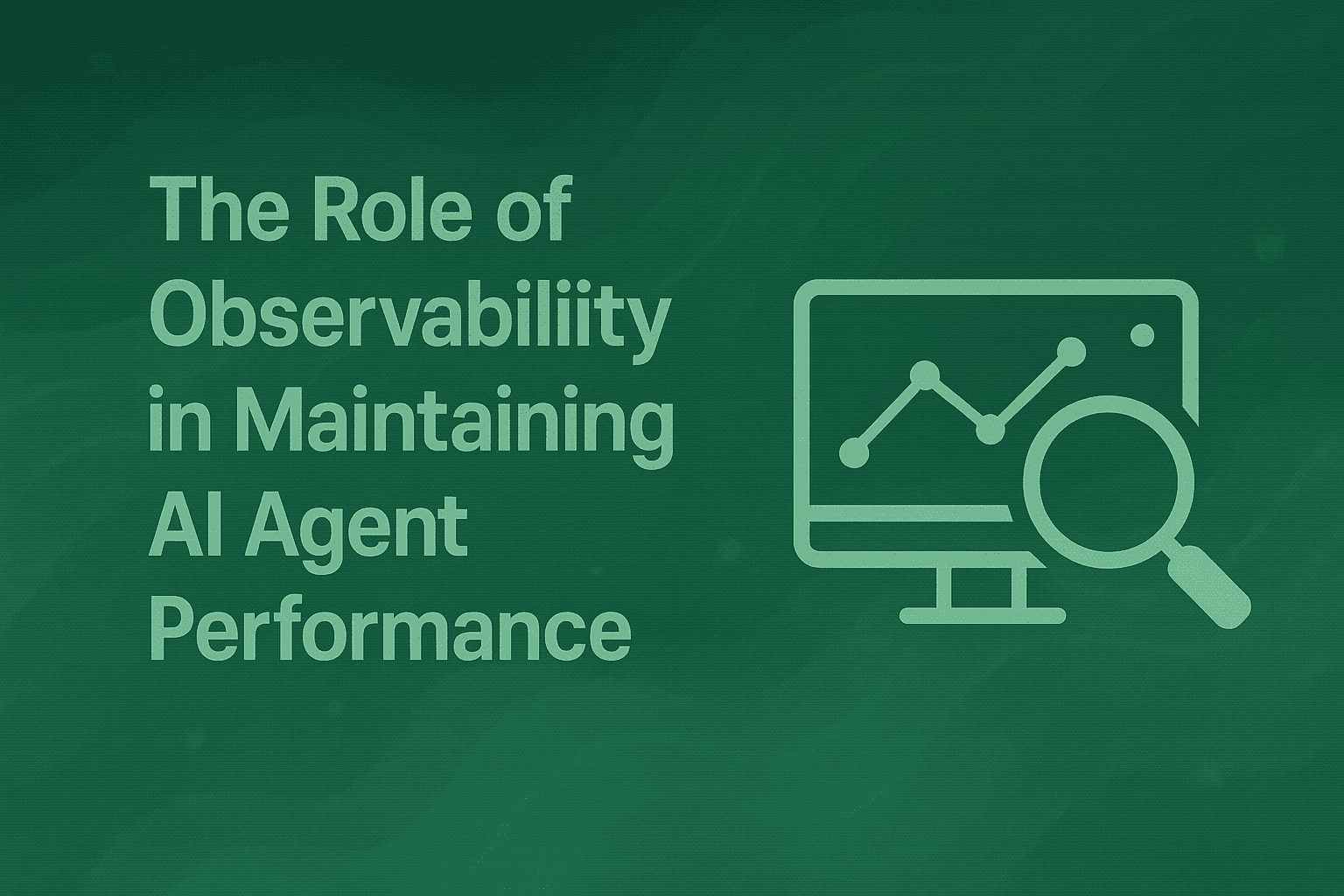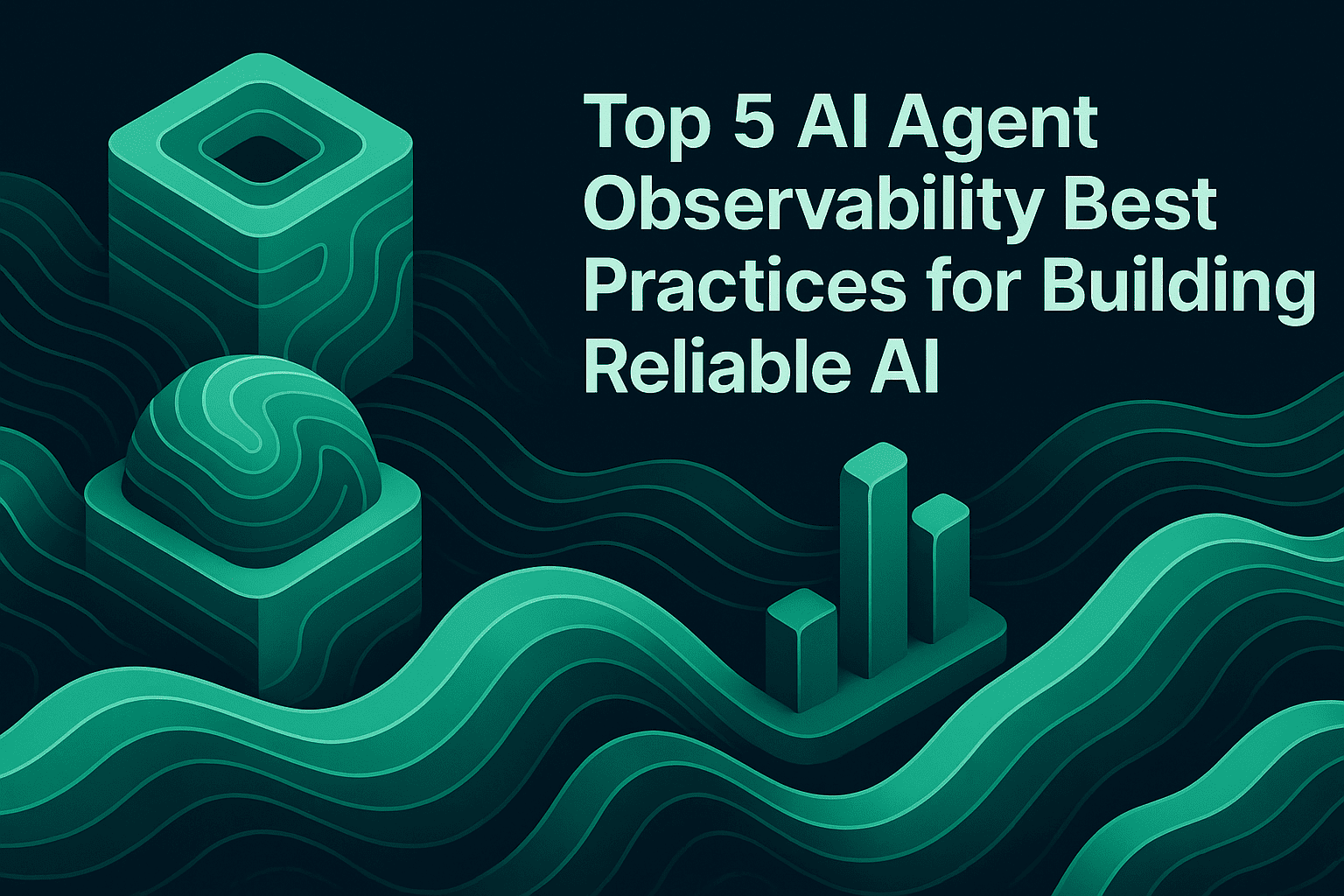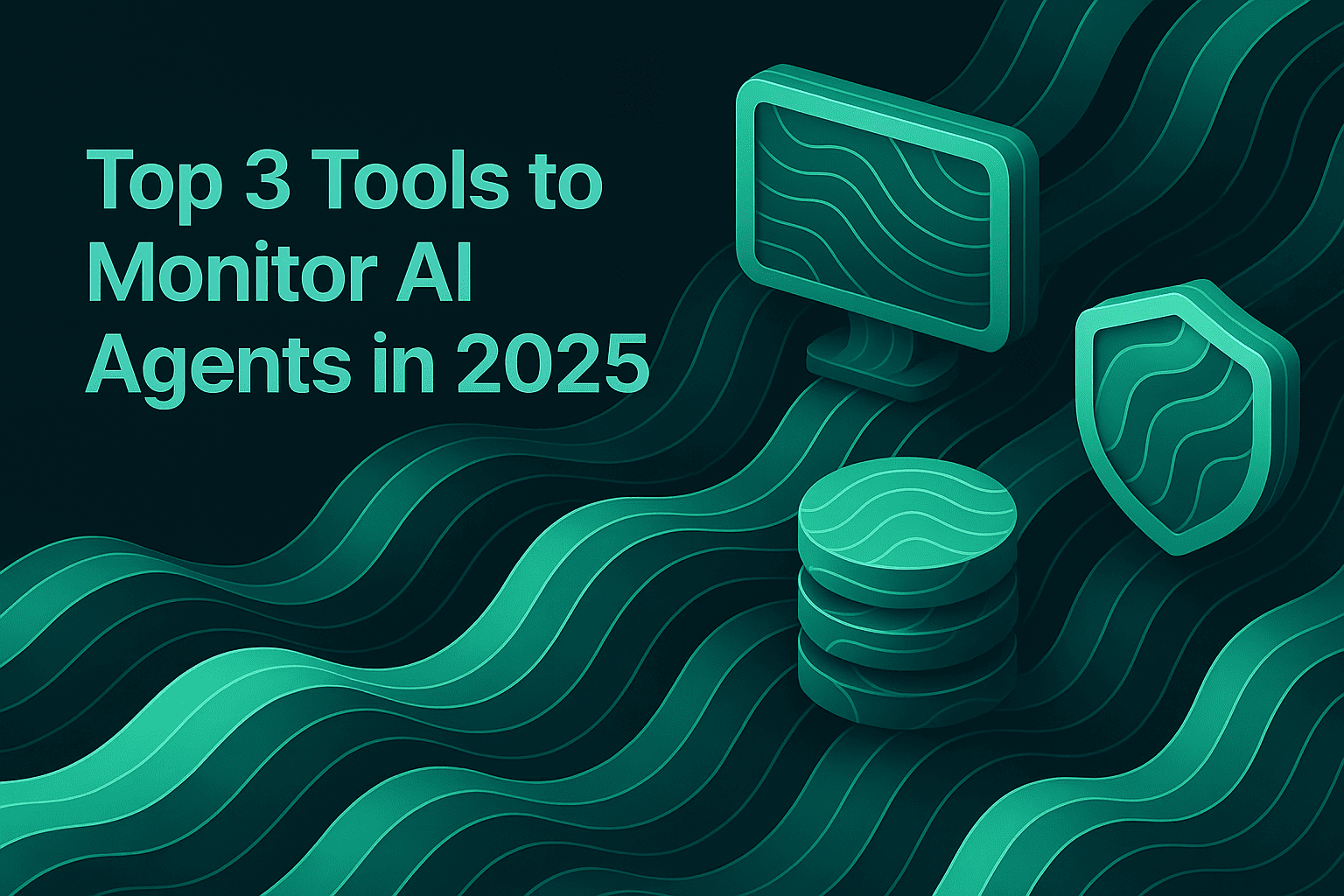The Definitive Guide to Enterprise AI Observability

Enterprise AI observability has become an operational necessity as organizations deploy AI systems at scale, requiring specialized techniques to track, analyze, and optimize the complex behavior of machine learning models and AI agents.
What is AI observability
AI observability is a shift in monitoring technology systems, providing visibility into AI systems, including their inputs, outputs, performance, and operational behavior. It addresses challenges posed by AI's non-deterministic behavior, requiring specialized observation techniques.
Key AI observability aspects include:
- Monitoring model generations
- Tracking data drift
- Measuring inference latency
- Evaluating output quality
- Detecting bias and safety issues
AI observability is essential across business operations, impacting revenue and customer experience. The observability market is projected to reach USD 6.1 billion by 2030, driven by cloud adoption. Distinctions from related disciplines are clear: data observability focuses on data quality, while software observability monitors application performance. AI observability integrates both while adding AI-specific dimensions.
Common pitfalls in implementing AI observability include:
- Treating AI systems like traditional software
- Neglecting bias and fairness monitoring
- Underestimating multi-model complexity
Successful implementations require recognizing unique challenges and developing tailored approaches.
How AI observability differs from traditional monitoring
AI observability signifies a paradigm shift from traditional monitoring, which relies on deterministic metrics. Unlike conventional applications, AI systems exhibit non-deterministic behavior, necessitating new evaluation methods for performance measurement.
AI observability focuses on:
- Evaluating response quality and relevance
- Monitoring prompts and model evaluations
- Analyzing AI-specific performance indicators
OpenTelemetry standards cater to AI observability needs with specialized schema conventions for telemetry data. Human-in-the-loop reviews enhance AI observability, supporting automated metrics with human evaluation for creativity and appropriateness.
The shift to cloud-based AI observability solutions reflects the complexity of these monitoring requirements, with cloud solutions capturing over 61% of market share in 2024. Adoption patterns indicate that while large enterprises dominate revenue, SMEs are rapidly expanding adoption.
Core capabilities of enterprise AI observability
Effective enterprise AI observability platforms must deliver capabilities tailored to monitoring AI systems. Key functionalities include:
- Tracing: Capturing the context of AI interactions, including prompts, parameters, reasoning steps, and outputs.
- Real-time dashboards and alerting: Displaying AI-specific metrics like model accuracy trends and response quality.
- Drift, bias, and safety detection: Monitoring changes in data distributions, identifying unfair patterns, and ensuring safe outputs.
- Root cause analysis and model lineage tracking: Quickly identifying issues by tracing model versions and training data.
- Cost and throughput monitoring: Tracking inference costs, resource allocation, and processing rates.
The significance of these capabilities is evident, with AI observability platforms enabling proactive risk management before failures occur.
Architecture for LLM and agent observability
Designing architecture for LLM and agent observability requires a multi-layered framework to address complex AI monitoring challenges. This architecture typically includes:
- Instrumentation layer: Captures telemetry data via specialized SDKs.
- Collection layer: Aggregates data in real-time.
- Storage layer: Maintains hot and cold storage for analysis.
- Analysis layer: Applies AI algorithms to detect patterns and trends.
- Presentation layer: Delivers insights through dashboards and alerts.
Instrumentation must capture semantic context, including prompt templates and user inputs. RAG and data pipeline tracing methodologies enhance visibility across multi-step AI workflows.
Deployment options (SaaS vs. self-hosted) significantly affect architecture design, with geographic considerations influencing data residency and compliance. Cloud-based approaches are increasingly adopted for their scalability.
Metrics and SLOs for AI systems
Establishing metrics and Service Level Objectives (SLOs) for AI systems necessitates a rethinking of performance measures. Key metrics include:
- Latency: Response time and time-to-first-token.
- Accuracy: Subjective evaluation of outputs through various methods.
- Quality targets: Relevance, coherence, and adherence to instructions.
- Hallucination and safety metrics: Monitoring for factually incorrect outputs and ensuring safety.
User journey analytics provide insights into AI's impact on user behavior, while cost management strategies address variable AI expenses. Error budgets must consider acceptable failure rates and quality variations.
Market trends highlight the need for comprehensive metrics as organizations recognize the importance of operational metrics for AI success.
Implementation and integration guide
Implementing AI observability requires a structured approach that balances visibility needs with scalability and integration. A phased rollout plan typically consists of:
- Instrumenting core AI applications and establishing basic telemetry.
- Expanding to sophisticated metrics and automated quality evaluation.
- Introducing advanced capabilities like drift detection and bias monitoring.
OpenTelemetry setup is essential for standardized data collection. Integration with existing systems ensures seamless operational workflows, while addressing redaction and privacy controls is crucial due to sensitive data handling.
Market growth underscores the importance of proper implementation planning, with organizations benefiting from a rapidly expanding ecosystem of tools.
Advanced practices for agents and RAG
Advanced practices for agents and Retrieval-Augmented Generation systems tackle complex monitoring challenges. Key practices include:
- Multi-turn agent tracing: Tracking conversation state and context across interactions.
- Tool call observability: Monitoring tool interactions and establishing tool-specific SLOs.
- Simulation and A/B testing: Validating agent performance and configurations under controlled conditions.
- Human review queue management: Prioritizing high-risk interactions for review and improving automated assessments.
Safety red teaming workflows proactively test AI systems against vulnerabilities, requiring specialized expertise and comprehensive testing libraries.
Governance security and compliance
Robust governance, security, and compliance measures in AI observability ensure trust and regulatory adherence. Key components include:
- Role-Based Access Control (RBAC): Ensuring data accessibility based on roles.
- Audit trails: Tracking access and changes to observability data.
- Compliance with relevant standards: Including SOC2, HIPAA, ISO, and GDPR.
Data residency and VPC isolation techniques address geographical and network security needs. Vendor risk assessments and data portability strategies maintain control over AI observability investments.
Troubleshooting and cost optimization
Effective troubleshooting and cost optimization are vital for reliable AI operations. Key strategies include:
- Debugging playbooks: Structured approaches for diagnosing common issues.
- Performance tuning and caching: Optimizing responsiveness and managing computational costs.
- Cost control strategies: Implementing usage-based alerting and establishing cost allocation models.
Measuring ROI and improving Mean Time to Recovery (MTTR) highlight the business value of AI observability investments, with performance optimization essential for sustainable operations.
Conclusion
Maxim AI provides an end-to-end platform for AI agent simulation, evaluation, and observability, enabling teams to ship reliable AI applications faster. From experimentation and evaluation to production monitoring and debugging, Maxim empowers engineering and product teams to maintain the highest quality standards throughout the AI development lifecycle.
Ready to elevate your AI agent quality? Get started with Maxim or schedule a demo to see how our platform can transform your agent observability and evaluation workflows.


